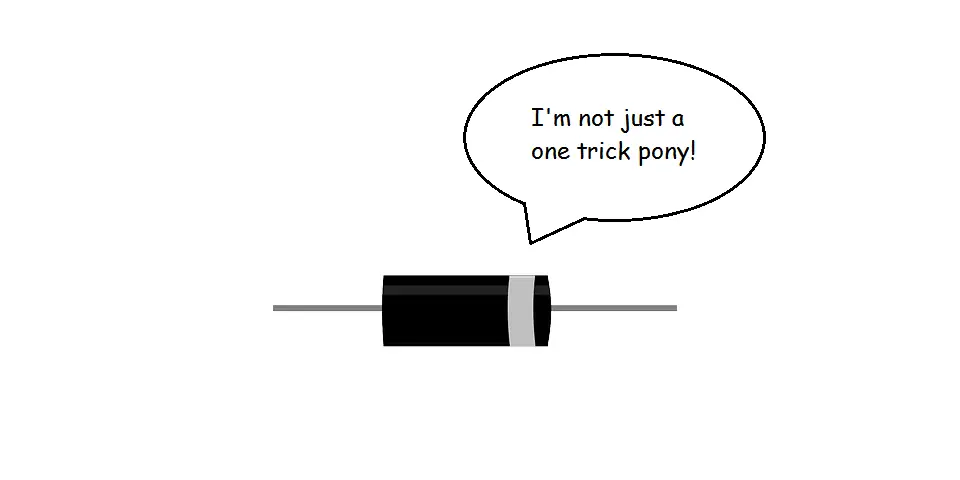The Zener diode is a type of diode used commonly in many electrical and electronic circuits.
However, a normal diode can only allow current to flow in one direction, whereas the zener diode has the ability to conduct current in forward and reverse directions.
The advantage of a zener diode is that it is able to maintain a stable reference voltage for a wide variety of voltages.
Because of these unique abilities, the zener diode is utilized in a wide range of applications.
But, what is a zener diode used as?
The zener diode is used in applications which include;
- Voltage Regulation
- Overvoltage protection
- Clipping circuits
This article shall take a closer look at the zener diode and its applications mentioned above.
What is a zener diode
Before we take a look at its applications and what the zener diode is used as, let’s take a quick look at the zener diode and how it operates.
As mentioned at the start, the zener diode is a variation of the commonly used electronic component being the diode.
It is a semiconducting component which consists of heavily doped P-N Junction.
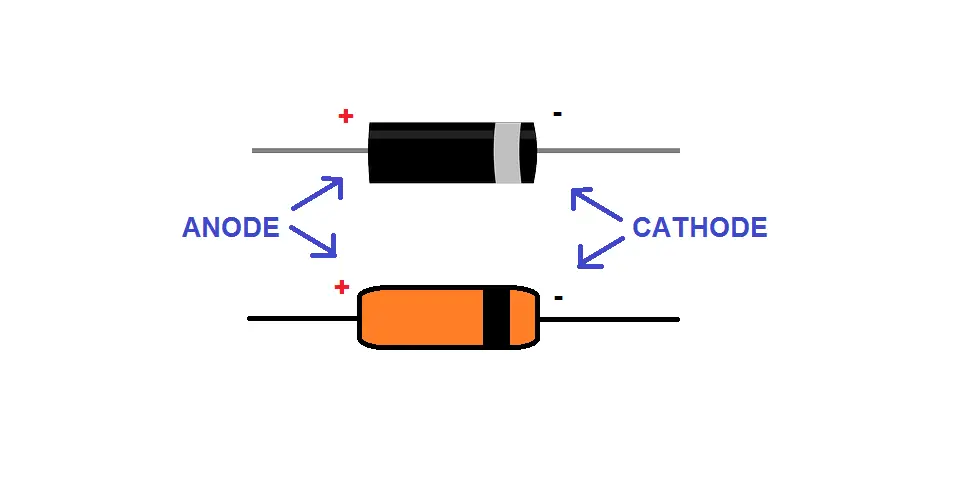
Unlike a normal diode (which can only conduct current in the forward direction, or when forward biased), a zener diode has the capability of conducting current in the forward and reverse direction (forward and reverse bias).
Other unique characteristics include being able to conduct a large current at a certain voltage known as the breakdown voltage, and being able to provide a stable voltage for a wide range of voltages.
Later you will see how these characteristics come in handy in certain applications.
How does a zener diode work?
So, how does a zener diode conduct current in both directions?
Let’s take a look.
A zener diode can be biased in three ways;
- Zero Bias
- Forward Bias and
- Reverse Bias
A zener diode is said to have zero bias when there is no external voltage applied to it.
When forward biased, the zener operates like a normal diode. In the forward bias, a zener will start to conduct current when the voltage across it is between 0.3 or 0.7 volts.
In the forward bias, the zener diode’s positive terminal (anode) is connected to the positive terminal of a voltage source, and its negative terminal (cathode) is connected to the negative terminal of the voltage source.
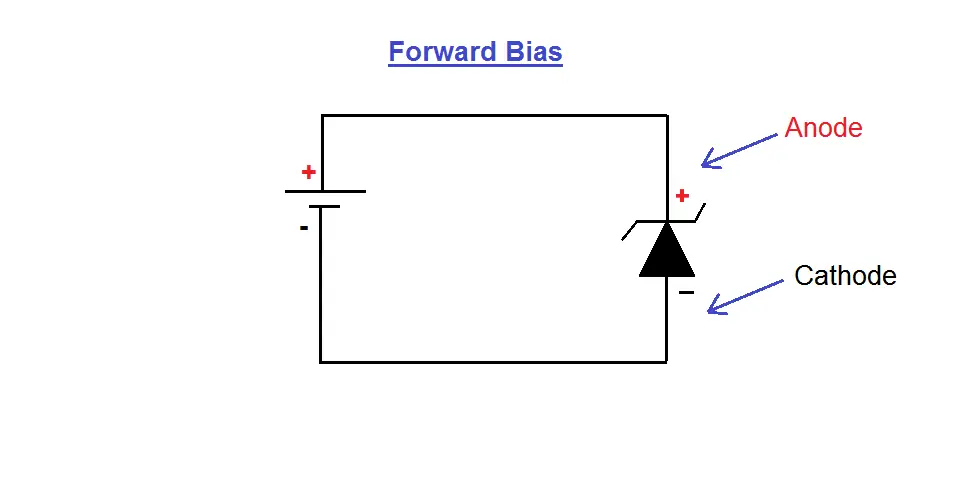
Now, if we reverse the voltage across the diode, the zener diode is in the reverse bias mode.

When reverse biased, a small leakage current flows through the zener diode. This current remains close to zero until the breakdown voltage is reached.
When the breakdown voltage is reached, current starts to flow in the opposite direction.
For example, a 6V Zener diode tells us the breakdown voltage value is 6V. It will block current to flow in the reverse direction until the breakdown voltage of 6V is reached.
V-I Characteristics of a zener diode
The operation of the zener diode can be best depicted in a graph known as the V-I characteristic graph as seen below.
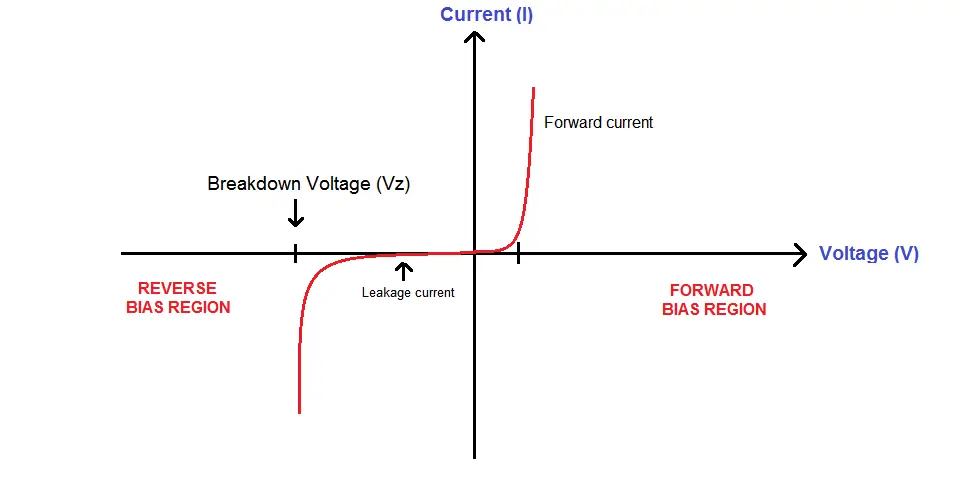
This graph shows us what happens when the zener is forward and reverse biased.
In the first quadrant, the zener diode functions like a normal P-N junction diode.
The third quadrant shows us what happens when we reverse the voltage across the zener diode. Initially there is the small leakage current until the zener breakdown voltage is reached which then sees the current start to rise.
Zener diode in the reverse bias
The zener diode behaves like a normal diode in the forward bias, however its true superpowers lie in the reverse bias.
As we just learnt, a small leakage current flows through the zener diode when it is reverse biased. When this voltage reaches a critical voltage (breakdown voltage), current starts to flow in the reverse direction and will reach its maximum after a certain time.
This maximum current is controlled by a series resistor. Once the current has reached its maximum, it will remain constant for a wide range of voltages.
There are two major breakdowns that occur when the zener diode is reverse biased;
- Zener Breakdown and
- Avalanche Breakdown
Zener breakdown
The first of the two breakdowns is the zener breakdown.
This happens when the reverse voltage reaches the zener voltage (or breakdown voltage). The electric field within the depletion region strengthens and starts to pull electrons from their valence bands.
Valence electrons that gain a sufficient amount of energy break free from their parent atom.
In the zener breakdown region, a small increase in voltage results in a rapid increase in current.
Avalanche breakdown
The avalanche breakdown in a zener diode occurs at a high reverse voltage (higher than the zener voltage) after the zener breakdown.
When this high voltage is applied to its PN junction, free electrons gain energy and start to accelerate.
These free electrons start to collide with other atoms knocking more electrons free. These constant collisions cause a large number of free electrons resulting in an increase in current.
This avalanche breakdown exists in the zener diode at a zener voltage greater than 6 volts.
What a zener diode can be used as; 3 common applications of a zener diode
Ok, now that we have learnt a bit about the zener diode, let’s take a look at what it can be used for in a variety of applications.
What a zener diode can be used as; Application #1: Voltage Regulation
First on the list, and one of the most common applications where a zener diode is used is Voltage regulation.
Voltage regulation is when a system is able to generate a constant (or near constant) output voltage level for a variety of input voltages.
A voltage regulator is an electrical/electronic device whose task is to provide this constant voltage regardless of any changes of voltage at its input.
They are an essential component as they maintain voltages within the desired ranges of the system without damaging it.
How a zener diode is used as a voltage regulator
One of the main abilities of the zener diode is to maintain a stable voltage across it as the input voltage may vary (which is exactly what is needed in voltage regulation).
This happens at the zener voltage in the zener breakdown region.
To get a desired output voltage, you would have to select a zener diode with the breakdown voltage that matches that value.
So, for example, if a voltage of 5V (or less) is required at the output, a zener diode with a breakdown voltage of 5V is required.
The zener diode would need to be connected in parallel with the load as seen below.
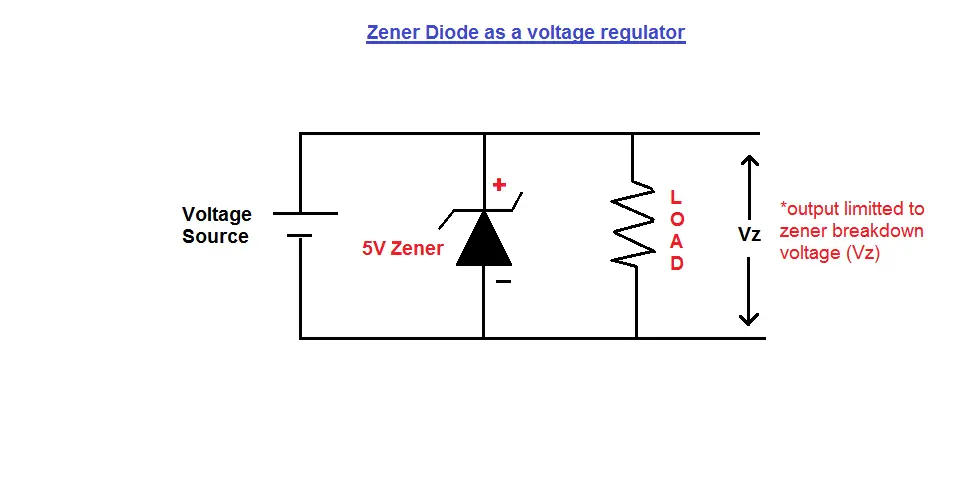
As you can see, the zener diode is connected so that it is reverse biased (so that it can enter the zener breakdown region).
Since the load is connected in parallel to the zener diode, the voltage across it equals the zener breakdown voltage (in this instance 5V).
If the voltage source increases, the output voltage is maintained at the desired 5V.
This is why zener diodes are perfect for voltage regulation applications.
What a zener diode can be used as; Application #2: Over-voltage protection
Next up of the applications of a zener diode is Overvoltage protection.
Before we look at what overvoltage protection is, we need to learn about overvoltage.
So what exactly is overvoltage?
In general a circuit will have three voltage ratings; minimum, recommend/standard, and maximum.
In the example in the previous section we wanted an output voltage of 5V (which we can call our standard voltage).
We can say the minimum voltage is 4.5V and the maximum voltage is 5.5V.
Overvoltage occurs when the voltage levels in a circuit (or part of a circuit) exceeds the maximum voltage level which it was designed for.
It can appear as a spike, transient or could be permanent.
So, if the voltage levels in the circuit exceeded 5V to say 6V, this would be considered overvoltage. This is an unwanted scenario as it could have the potential of damaging components within the circuit.
Overvoltage can be a result of internal as well as external conditions which include, wiring errors, failure of electrical insulation/isolation, varying circuit loading, or poor voltage regulation of a power source.
Overvoltage protection is a means of protecting the electrical/electronic system from these overvoltage scenarios mentioned above.
How a zener diode is used for over-voltage protection
A zener diode is a cost-effective means of overvoltage protection.
This comes down to the zener’s capability to accept a large current at a certain voltage (breakdown voltage), and also being able to maintain a stable output voltage for a wide variety of input voltages (as we just saw earlier).
At the breakdown voltage the zener diode ‘opens up’ and accepts an increase in current. This is the exact trait that is required for overvoltage protection.
The circuit setup for using a zener diode for overvoltage protection is similar to the one used in voltage regulation but with the addition of a series resistor.
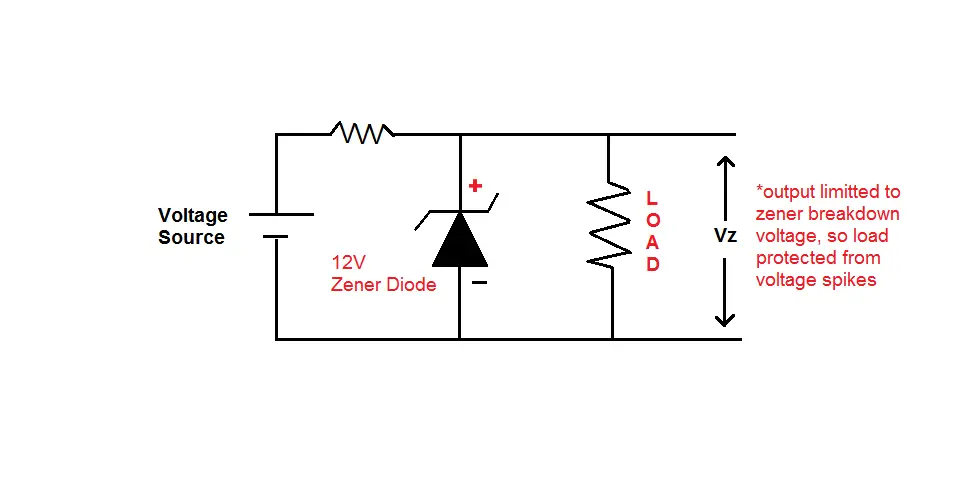
Say our output load operates at a voltage between 10 and 12 volts, we would need to select a zener diode rated at a breakdown voltage of 12 volts.
If there is a spike in voltage at the input above 12 volts, the zener diode will protect the load by limiting the output to only 12 volts.
What a zener diode can be used as; Application #3: Clipping circuits
Clipping circuits are the next major application where a zener diode can lend its helping hand.
What are clipping circuits and why are they necessary?
A clipping, or clipper circuit is a circuit with the purpose of stopping a signal from exceeding a reference voltage level.
They remove a small part of the input signal which is usually intended for transmission and are most commonly used in Alternating Current (AC) circuits.
How a zener diode used as a clipper
Clipping circuits consist of linear and non-linear components and none that store energy.
One of the most widely used clipping circuits uses a zener diode as seen below.
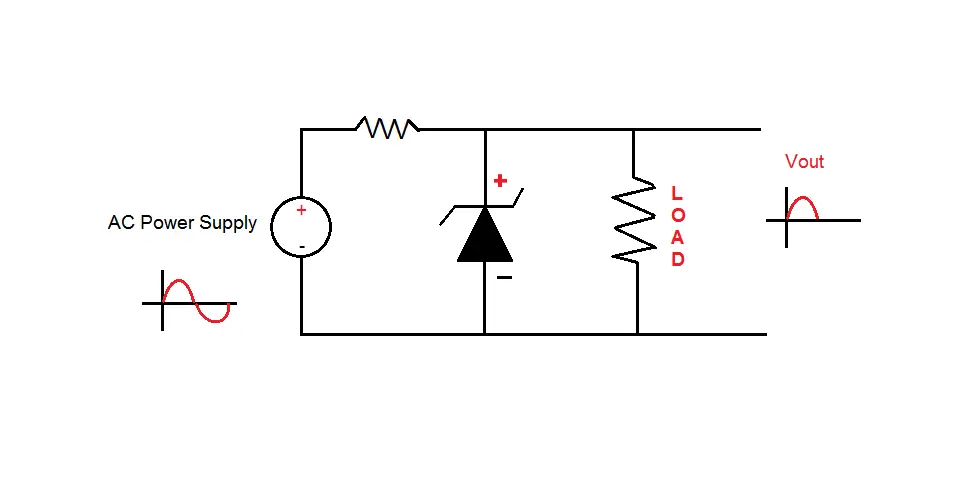
The operation of a zener diode clipping circuit goes as follows; during the positive cycle of the AC waveform (which has a peak of 5V), the zener diode is reverse biased and thus does not conduct.
The waveform is unchanged at the output.
During the negative cycle of the waveform, the zener diode is forward biased and is now conducting current.
The negative cycle of the waveform is clipped off at -0.7 volts due to forward voltage drop of the zener diode.
So when forward biased, it clips the voltage, and when reverse biased, it blocks the current.
Is a zener diode used in AC or DC applications?
As we just saw, the zener diode is a very versatile component with unique capabilities that can be utilized in many different electrical and electronic applications.
The zener diode can also be used for both DC (Direct Current) and AC (Alternating Current) applications.

